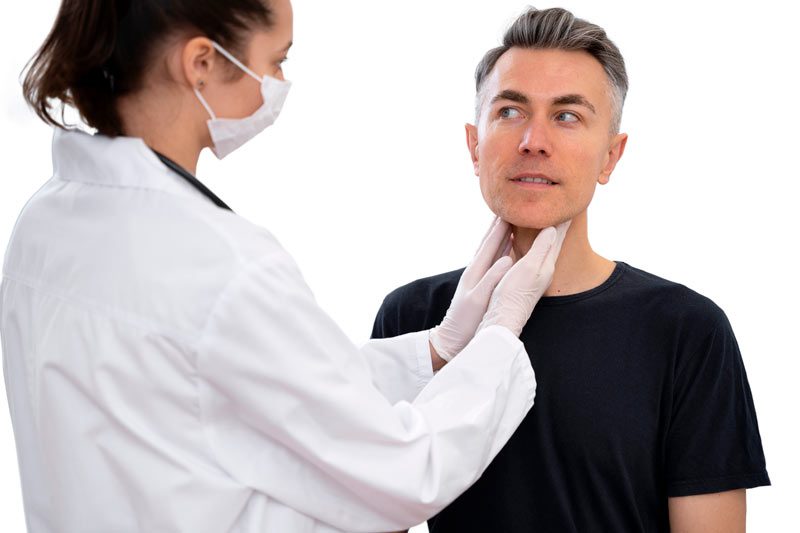This insightful blog unwraps the layers surrounding the age factor in thyroid cancer prevalence, offering a seamless blend of professionalism and simplicity. We navigate through intricate statistical analyses, untangle the web of influential elements, and arm you with proactive insights, all aimed at unraveling the key factors that define the most common age for thyroid cancer. Join us in this exploration as we shed light on the fascinating interplay between age and thyroid cancer, providing you with essential knowledge to navigate this aspect of health with confidence.
Exploring Thyroid Cancer: An Overview of Incidence and Age Patterns
Thyroid cancer, a complex and multifaceted condition, displays intriguing patterns of incidence across different age groups. Statistical analyses have unveiled distinct trends that shed light on the age-related dynamics of this disease. One remarkable observation is the peak incidence among individuals in their 30s and 40s, suggesting a higher vulnerability during these life stages. However, the prevalence tends to decline as age advances beyond the 50s.
This age-specific pattern is further nuanced by gender disparities, with thyroid cancer being more frequently diagnosed in women compared to men, particularly in the younger age brackets. The reasons behind this age and gender interplay remain subjects of ongoing research, encompassing both hormonal influences and genetic predispositions. By unraveling these age patterns, we aim to provide a comprehensive understanding of the intricate relationship between age, gender, and thyroid cancer incidence, enabling individuals to proactively manage their health and make informed decisions.
Thyroid Cancer by Age: Analyzing Statistical Trends and Findings
Diving deeper into the realm of thyroid cancer, a meticulous analysis of statistical trends and findings reveals captivating insights into how age influences its occurrence. Epidemiological studies have meticulously mapped out the age-specific incidence rates, showcasing a consistent rise in cases among younger adults, notably in the third and fourth decades of life. This intriguing phenomenon sparks inquiries into the role of hormonal dynamics and environmental exposures during these crucial periods.
Moreover, while the incidence tends to decline in older age groups, a noteworthy exception emerges in the form of papillary thyroid cancer. This subtype exhibits a distinct bimodal pattern, with a peak occurrence in the 30s and a secondary rise in the 60s. Unraveling the reasons behind this unique age distribution has sparked scientific curiosity, leading to investigations into genetic mutations, cellular aging processes, and potential interactions with external factors.
Factors Influencing Thyroid Cancer Prevalence: A Multi-faceted Perspective
Genetic predisposition stands out as a significant player, with certain inherited mutations rendering individuals more susceptible to developing thyroid malignancies. Researchers are tirelessly deciphering the interplay between these genetic markers and age, aiming to unravel the underlying mechanisms that lead to varying prevalence rates.
Environmental exposures also weave into this complex narrative, as dietary habits, radiation exposure, and other external factors have been implicated in thyroid cancer development. Particularly intriguing is the potential role of hormonal fluctuations during critical life stages. Hormones, which orchestrate a wide array of physiological processes, are known to influence thyroid health and may play a pivotal role in modulating cancer risk across the lifespan.
With that being said, it is important to mention that this multifaceted perspective sheds light on the intricate ballet of factors that shape thyroid cancer prevalence. By comprehending these influences, we equip ourselves with the knowledge needed to make informed choices, advocate for early detection, and engage in proactive measures that span age groups. Through this holistic lens, we empower individuals and healthcare practitioners to collaborate in the pursuit of comprehensive thyroid health for all.
Empowering Your Knowledge: Thyroid Cancer Awareness and Early Detection
Empowering oneself with knowledge is paramount when it comes to thyroid cancer, especially in the context of age-related prevalence. Awareness becomes a potent tool in the arsenal of proactive health management, enabling individuals to recognize potential symptoms and risk factors early on. By familiarizing oneself with the signs that may manifest across different age groups, individuals can take prompt action, seeking medical guidance and assessment when necessary.
Early detection, a cornerstone of effective thyroid cancer management, underscores the importance of regular health check-ups and screenings. Awareness of age-specific risk profiles empowers both individuals and healthcare providers to tailor screening protocols to different life stages, enhancing the chances of identifying thyroid abnormalities at their nascent stages. With advancing medical technology and diagnostic techniques, early detection has become more accessible and accurate, positioning individuals to make informed decisions and embark on treatment journeys with greater confidence.
By illuminating the significance of thyroid cancer awareness and early detection within the context of age-specific prevalence, this insight-packed exploration equips you with the tools needed to champion your thyroid health. Through proactive engagement and informed choices, you can seize control of your well-being, irrespective of your age, and contribute to a future marked by empowered thyroid health advocacy.
